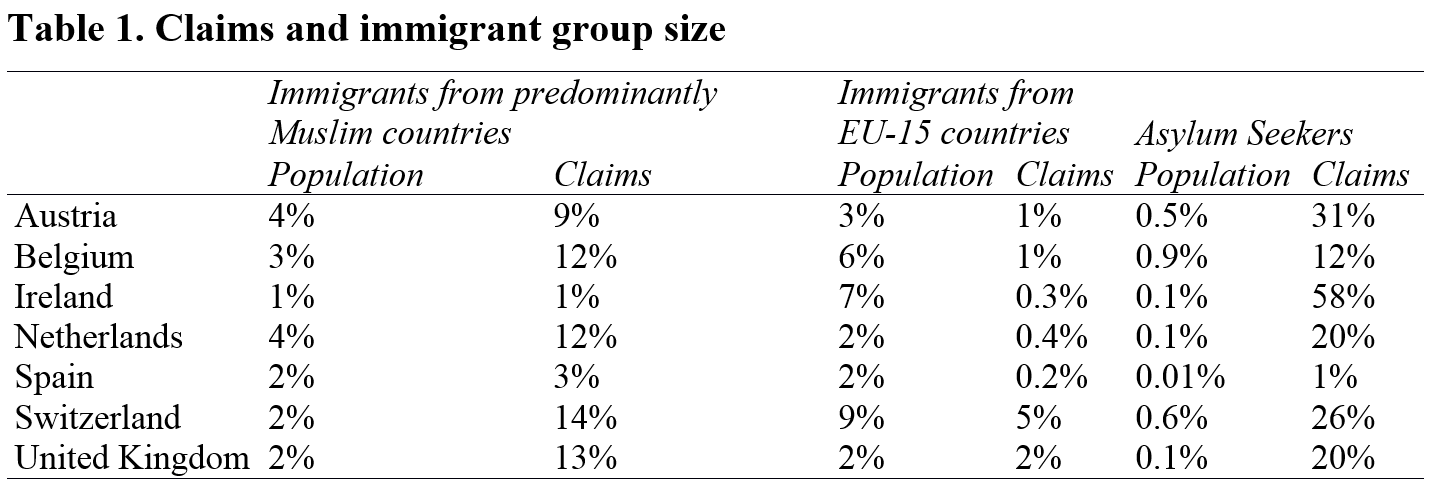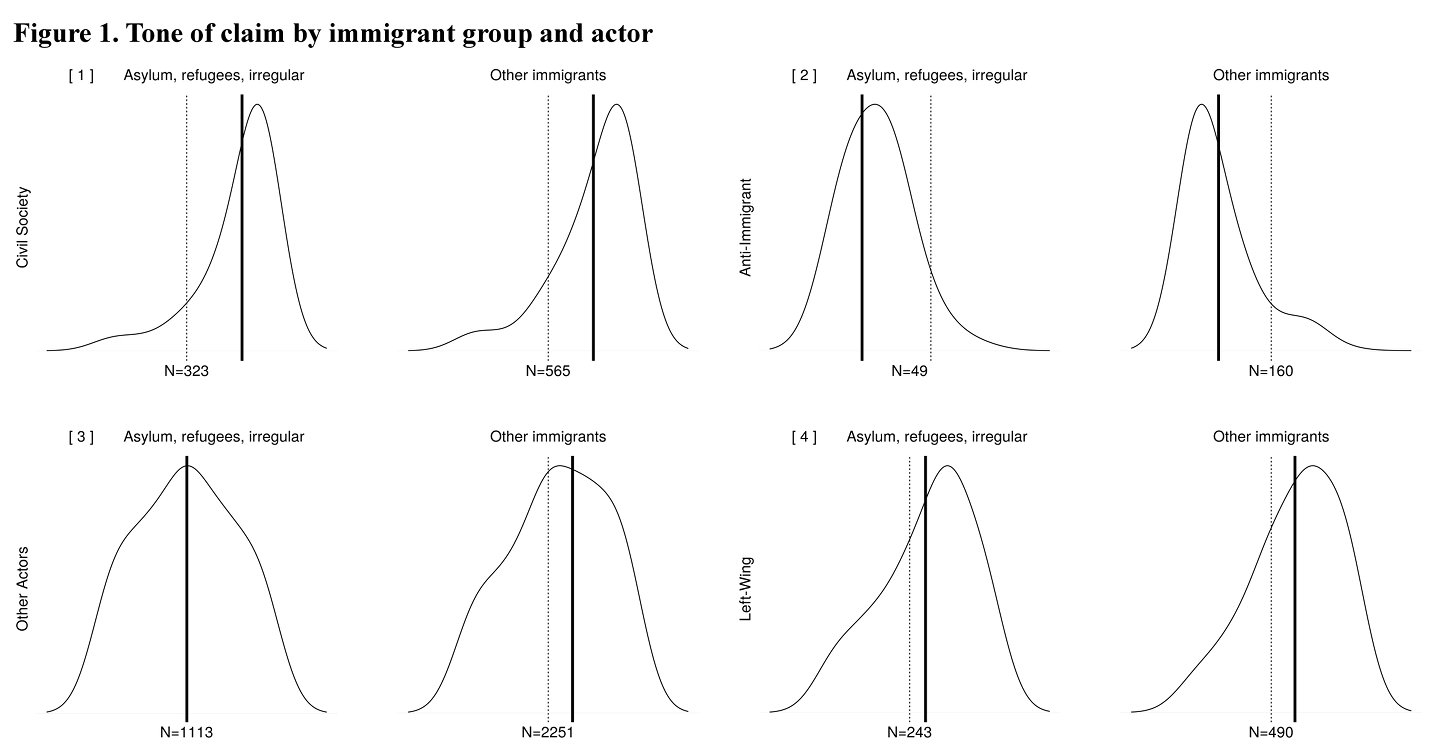Refugees in European News
How asylum seekers, refugees, and irregular immigrants appear in European news

The immigrants we see in the media do not necessarily correspond to the immigrants who come to live with us. In their analysis of the British media, Blinder and Allen show that media reports often write about asylum seekers and “illegal” immigrants. Yet, immigrant workers, family members, and international students constitute by far the numerically larger immigrant flows.
In a study of the politicization of immigration in seven European countries, we found a similar pattern: the size of immigrant groups does not correspond to the frequency with which claims about them appear in the news (Table 1).

To study the way immigrants appear in the news in Europe, we chose 700 random days between 1995 and 2009, and manually selected every article on immigration in two newspapers in seven countries (Austria, Belgium, Ireland, the Netherlands, Spain, Switzerland, and the United Kingdom). A team of diligent students then helped us code these articles to identify the actors present in the media, what they say, about which immigrants they speak, and how they do so. This yields a rich data set now freely available to interested researchers. Political claims capture public demands articulated by politicians, celebrities, organizations, and other actors. In these demands, the actors call for action, criticize policy, of articulate proposals how policy should be. Perhaps the main finding regarding who talks about immigration in European news is that more often than not, politicization takes place top-down: government actors tend to dominate the debate.
We find that the way immigrants are portrayed in the media depends to a large extent on the kind of actor making a claim. Figure 1 illustrates this with respect to asylum seekers, refugees, and irregular immigrants. Numerically these groups constitute a small part of immigration in the countries examined, yet when it comes to media portrayals, they are one of the most common immigrant group talked about. Asylum seekers, refugees, and irregular immigrants are a “group” (defined in administrative terms) who generally must rely on other actors in the news to have a voice. Without access to formal politics, and characterized by precarious residence and social status, they normally cannot speak for themselves in political debates and related news articles.

We can see that the tone of claims varies by actor. Civil society actors tend to make positive statements about all immigrants: In the figure, the hump of the curve in the first panel is on the right of the dashed line, indicating that most claims are positive. By contrast, anti-immigrant actors (mostly anti-immigrant parties) unsurprisingly make negative claims: The hump of the curve is on the left in panel 2. For the residual category in panel 3—government actors, other legislative parties, and the media—claims about asylum seekers, refugees, and irregular immigrants tend to be less positive than about other immigrant groups. Panel 4 shows that left-wing parties tend to make fewer negative claims.
Table 2 illustrates that the justification used in claims about asylum seekers, refugees, and irregular immigrants differs from those used for other immigrant groups. A justification, also referred to as a ‘frame’, describes the reasons actor give why something should be done about immigration and immigrant integration. Here we differentiate between three kinds of justifications. Actors justify their claims with instrumental arguments (e.g. a cost-benefit argument) and moral principles (commonly references to human rights) relatively more often than with differences in identity (such as an alleged clash in cultures).

We thus find great variation in the way different actors talk about immigrants and immigration in the news. The debate on immigration focuses on particular groups—often asylum seekers, refugees, and irregular immigrants—groups who cannot directly counter claims made by others and have to rely on allies to speak on their behalf. Left-wing parties and especially civil-society actors tend to do this and balance the debate to a large extent. We need further study how different actors politicize immigration and how their varying involvement affects how immigrants are present in the media, and why the debate in the media focuses on such a small part of the immigrant population.
-Didier Ruedin
Notes: Didier Ruedin is a senior researcher and lecturer at the Swiss Forum for Migration and Population Studies at the University of Neuchâtel. Table 1 is adapted from Ruedin 2017; claims in all years 1995 to 2009 are combined. Table 2 is adapted from Table 2 in Ruedin 2017. Figure 1 is adapted from Figure 1 in Ruedin 2017. The kernel distributions describe the tone of claims made by different kinds of actors. Negative statements are on the left of the curve, and positive claims on the right. The black vertical lines give the interpolated median as a measure of central tendency. The dashed line indicates a neutral tone, and the number given gives the number of claims recorded for a particular actor-group pair. Credit for lead photo CC by-nc-nd by EYE DJ.